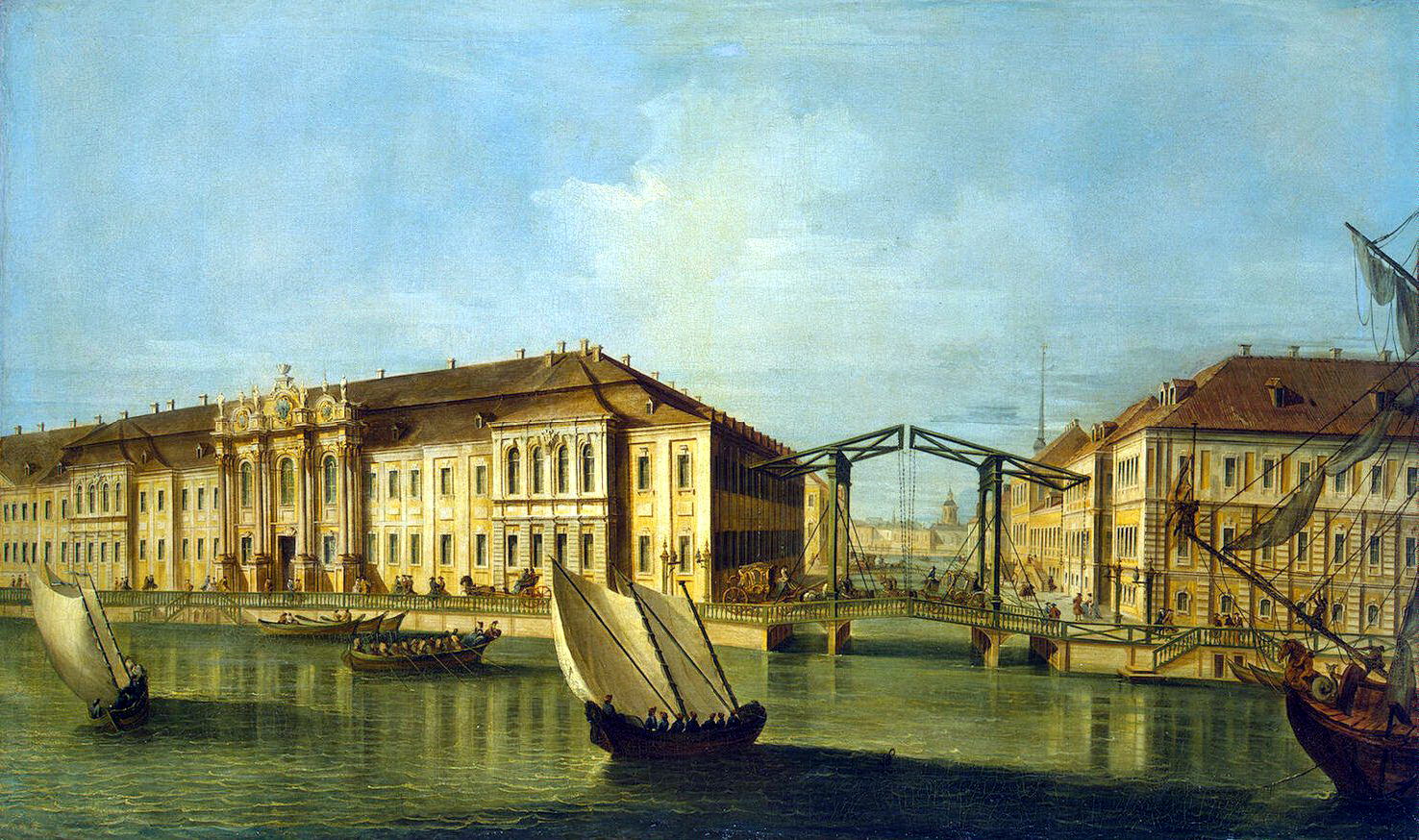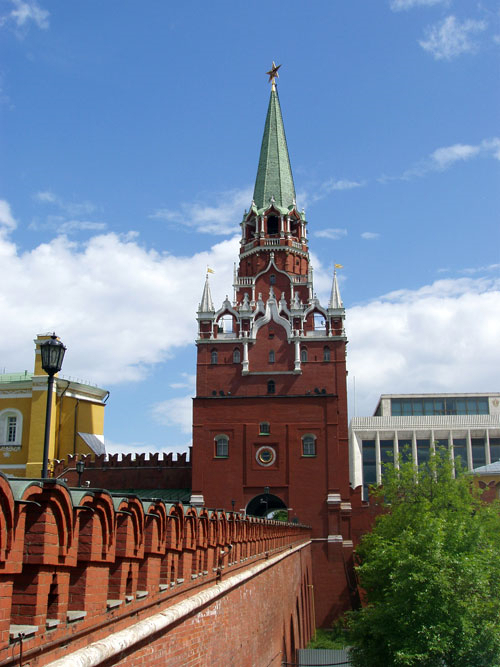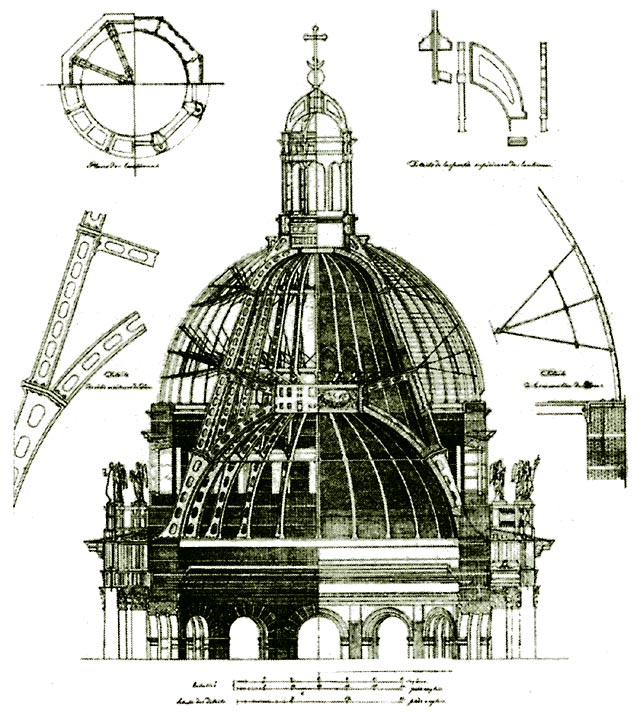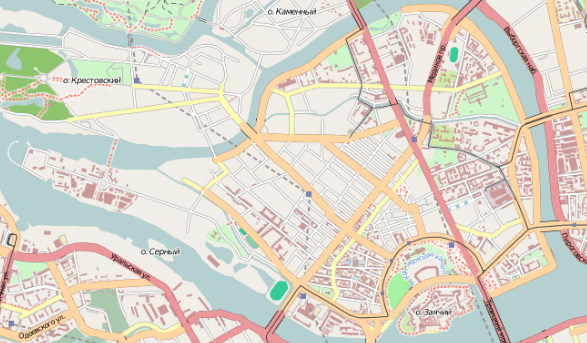|
Georg Johann Mattarnovi
Georg Johann Mattarnovi (russian: Георг Иванович Маттарнови, ''Georg Ivanovich Mattarnovi''; died 2 November 1719) was a German Baroque architect and sculptor, notable for his work in Saint Petersburg.V.K. Dmitriyev Архитекторы Санкт-Петербурга (Architects of Saint Petersburg), Korona-print, 2007 The birthplace of Mattarnovi is unknown, but most probably it was Prussia. His year of birth is also unknown. He was a sculptor, and a disciple and assistant of German architect Andreas Schlüter. Mattarnovi arrived in Saint Petersburg in 1714, following Schlüter. After the death of Schlüter, Mattarnovi continued work on Schlüter's projects. In 1715–1719, Mattarnovi managed the construction of the grotto pavilion in the Summer Garden originally designed by Schlüter. He also built two pavilions there, and a colonnade-gallery for an ancient sculpture of Venus. Mattarnovi built the Tsar Peter I's main residence of Saint Peterburg ... [...More Info...] [...Related Items...] OR: [Wikipedia] [Google] [Baidu] |
Nevsky Prospect
Nevsky Prospect ( rus, Не́вский проспе́кт, r=Nevsky Prospekt, p=ˈnʲɛfskʲɪj prɐˈspʲɛkt) is the main street ( high street) in the federal city of St. Petersburg in Russia. It takes its name from the Alexander Nevsky Lavra, the monastery which stands at the eastern end of the street, and which in turn commemorates the Russian hero Prince Saint Alexander Nevsky (1221–1263). Following his founding of Saint Petersburg in 1703, Tsar Peter I planned the course of the street as the beginning of the road to Novgorod and Moscow. The avenue runs from the Admiralty in the west to the Moscow Railway Station and, after veering slightly southwards at Vosstaniya Square, to the Alexander Nevsky Lavra. History of the street 18th century Early 18th century. Reign of Peter the Great On September 5, 1704, Admiralty of the Saint Petersburg was laid on the left bank of the Neva River. The area adjacent to the fortress began to be built up. In the area of mo ... [...More Info...] [...Related Items...] OR: [Wikipedia] [Google] [Baidu] |
18th-century German Architects
The 18th century lasted from January 1, 1701 ( MDCCI) to December 31, 1800 ( MDCCC). During the 18th century, elements of Enlightenment thinking culminated in the American, French, and Haitian Revolutions. During the century, slave trading and human trafficking expanded across the shores of the Atlantic, while declining in Russia, China, and Korea. Revolutions began to challenge the legitimacy of monarchical and aristocratic power structures, including the structures and beliefs that supported slavery. The Industrial Revolution began during mid-century, leading to radical changes in human society and the environment. Western historians have occasionally defined the 18th century otherwise for the purposes of their work. For example, the "short" 18th century may be defined as 1715–1789, denoting the period of time between the death of Louis XIV of France and the start of the French Revolution, with an emphasis on directly interconnected events. To historians who expand ... [...More Info...] [...Related Items...] OR: [Wikipedia] [Google] [Baidu] |
Russian Architects
This is a list of architects of the Russian Federation, Soviet Union, Russian Empire, Tsardom of Russia and Grand Duchy of Moscow, both ethnic Russians and people of other ethnicities. This list also includes those who were born in the ///Tsardom of Russia/Grand Duchy of Moscow but later emigrated, and those who were born elsewhere but immigrated to the country and/or worked there for a significant period of time. Attested biographies of architects in Russian history date back to 1475, when Aristotile Fioravanti, a native of Bologna, arrived in Moscow to build the Dormition Cathedral of the Moscow Kremlin. Foreign architects had a notable place in Russian and Soviet history, especially in the last quarter of the 18th century ( Charles Cameron, Bartolomeo Rastrelli, Carlo Rossi and others) and in the first quarter of the 20th century ( Mies van der Roe, Erich Mendelsohn, Ernst May and others). This list includes foreign architects whose primary, and most tangible work material ... [...More Info...] [...Related Items...] OR: [Wikipedia] [Google] [Baidu] |
1719 Deaths
Events January–March * January 8 – Carolean Death March begins: A catastrophic retreat by a largely-Finnish Swedish- Carolean army under the command of Carl Gustaf Armfeldt across the Tydal mountains in a blizzard kills around 3,700 men and cripples a further 600 for life. * January 23 – The Principality of Liechtenstein is created, within the Holy Roman Empire. * February 3 (January 23 Old Style) – The Riksdag of the Estates recognizes Ulrika Eleonora's claim to the Swedish throne, after she has agreed to sign a new Swedish constitution. Thus, she is recognized as queen regnant of Sweden. * February 20 – The first Treaty of Stockholm is signed. * February 28 – Farrukhsiyar, the Mughal Emperor of India since 1713, is deposed by the Sayyid brothers, who install Rafi ud-Darajat in his place. In prison, Farrukhsiyar is strangled by assassins on April 19. * March 6 – A serious earthquake (estimated magnitude >7) in El Salvador results in large fractu ... [...More Info...] [...Related Items...] OR: [Wikipedia] [Google] [Baidu] |
Philipp Georg Mattarnovi
Philipp is both a surname and a given name. Notable people with the name include: "Philipp" has also been a shortened version of Philippson, a German surname especially prevalent amongst German Jews and Dutch Jews. Surname * Adolf Philipp (1864–1936), German/American actor, composer and playwright * David Philipp, biologist * David Philipp (footballer) (born 2000), German footballer * Elke Philipp (born 1964), German Paralympic equestrian * Elliot Philipp (1915–2010), British gynaecologist and obstetrician * Franz Philipp (1890–1972), German church musician and composer * Julius Philipp (1878–1944), German metal trader * Lutz Philipp (1940–2012), German long-distance runner * Oscar Philipp (1882–1965), German and British metal trader * Paul Philipp (born 1950), Luxembourgian football player and manager * Peter Philipp (1971–2014), German writer and comedian * Robert Philipp (1895–1981), American Impressionist painter Given name * Philipp Bönig (born 1980), Germ ... [...More Info...] [...Related Items...] OR: [Wikipedia] [Google] [Baidu] |
Russian Empire
The Russian Empire was an empire and the final period of the List of Russian monarchs, Russian monarchy from 1721 to 1917, ruling across large parts of Eurasia. It succeeded the Tsardom of Russia following the Treaty of Nystad, which ended the Great Northern War. The rise of the Russian Empire coincided with the decline of neighbouring rival powers: the Swedish Empire, the Polish–Lithuanian Commonwealth, Qajar Iran, the Ottoman Empire, and Qing dynasty, Qing China. It also held colonies in North America between 1799 and 1867. Covering an area of approximately , it remains the list of largest empires, third-largest empire in history, surpassed only by the British Empire and the Mongol Empire; it ruled over a population of 125.6 million people per the Russian Empire Census, 1897 Russian census, which was the only census carried out during the entire imperial period. Owing to its geographic extent across three continents at its peak, it featured great ethnic, linguistic, re ... [...More Info...] [...Related Items...] OR: [Wikipedia] [Google] [Baidu] |
Saint Petersburg
Saint Petersburg ( rus, links=no, Санкт-Петербург, a=Ru-Sankt Peterburg Leningrad Petrograd Piter.ogg, r=Sankt-Peterburg, p=ˈsankt pʲɪtʲɪrˈburk), formerly known as Petrograd (1914–1924) and later Leningrad (1924–1991), is the List of cities and towns in Russia by population, second-largest city in Russia. It is situated on the Neva River, at the head of the Gulf of Finland on the Baltic Sea, with a population of roughly 5.4 million residents. Saint Petersburg is the List of European cities by population within city limits, fourth-most populous city in Europe after Istanbul, Moscow and London, the List of cities and towns around the Baltic Sea, most populous city on the Baltic Sea, and the world's List of northernmost items#Cities and settlements, northernmost city of more than 1 million residents. As Russia's Imperial capital, and a Ports of the Baltic Sea, historically strategic port, it is governed as a Federal cities of Russia, federal city. ... [...More Info...] [...Related Items...] OR: [Wikipedia] [Google] [Baidu] |
Kunstkamera
The Kunstkamera (russian: Кунсткамера) or Kunstkammer ( German for "Culture Room" (literally) or "Art Chamber", typically used for a " cabinet of curiosities") is a public museum located on the Universitetskaya Embankment in Saint Petersburg, facing the Winter Palace. Its collection was first opened to the public at the Summer Palace by Peter the Great in 1714, making it Russia's first museum. Enlarged by purchases from the Dutch collectors Albertus Seba and Frederik Ruysch, the museum was moved to its present location in 1727. Having expanded to nearly 2,000,000 items, it is formally organized as the Russian Academy of Science's Peter the Great Museum of Anthropology and Ethnography (russian: Музей антропологии и этнографии имени Петра Великого Российской академии наук, ''Muzey antropologii i etnografii imeni Petra Velikogo Rossiyskoy akademii nauk''), abbreviated in Russian as the or . Histor ... [...More Info...] [...Related Items...] OR: [Wikipedia] [Google] [Baidu] |
Saint Isaac's Cathedral
Saint Isaac's Cathedral or Isaakievskiy Sobor (russian: Исаа́киевский Собо́р) is a large architectural landmark cathedral that currently functions as a museum with occasional church services in Saint Petersburg, Russia. It is dedicated to Saint Isaac of Dalmatia, a patron saint of Peter the Great, who had been born on the feast day of that saint. It was originally built as a cathedral but was turned into a museum by the Soviet government in 1931 and has remained a museum ever since, with church services held in a side chapel since the 1990's. In 2017, the Governor of Saint Petersburg offered to transfer the cathedral back to the Russian Orthodox Church, but this was not accomplished due to the protests of St Petersburg citizens opposing the offer. History The church on St Isaac's Square was ordered by Tsar Alexander I, to replace an earlier structure by Vincenzo Brenna, and was the fourth consecutive church standing at this place. A specially appointed com ... [...More Info...] [...Related Items...] OR: [Wikipedia] [Google] [Baidu] |
Petrogradsky Island
Petrogradsky Island or Petrograd Island ( Russian: Петроградский остров) is the third largest island in the Neva River delta in Saint Petersburg, Russia. Along with Zayachy Island, Aptekarsky Island, and Petrovsky Island, it constitutes the Petrogradskaya Side ( Russian: Петроградская сторона). It is the administrative center of the Petrogradsky District and hosts a number of universities and research centers, as well as cultural, historical, and recreational facilities. Geography Petrogradsky Island lies between the Neva River and its Bolshaya Nevka branch. It is separated from Aptekarsky Island on the north by the Karpovka River, from Krestovsky Island on the west by the Malaya Nevka, from Petrovsky Island on the south by the Zhdanovka River, and from Zayachy Island on the southeast by the Kronverksky Strait. It is linked to the central district by the Troitsky Bridge, to Vasilievsky Island by the Birzhevoy ''(Exchange)'' Bri ... [...More Info...] [...Related Items...] OR: [Wikipedia] [Google] [Baidu] |








